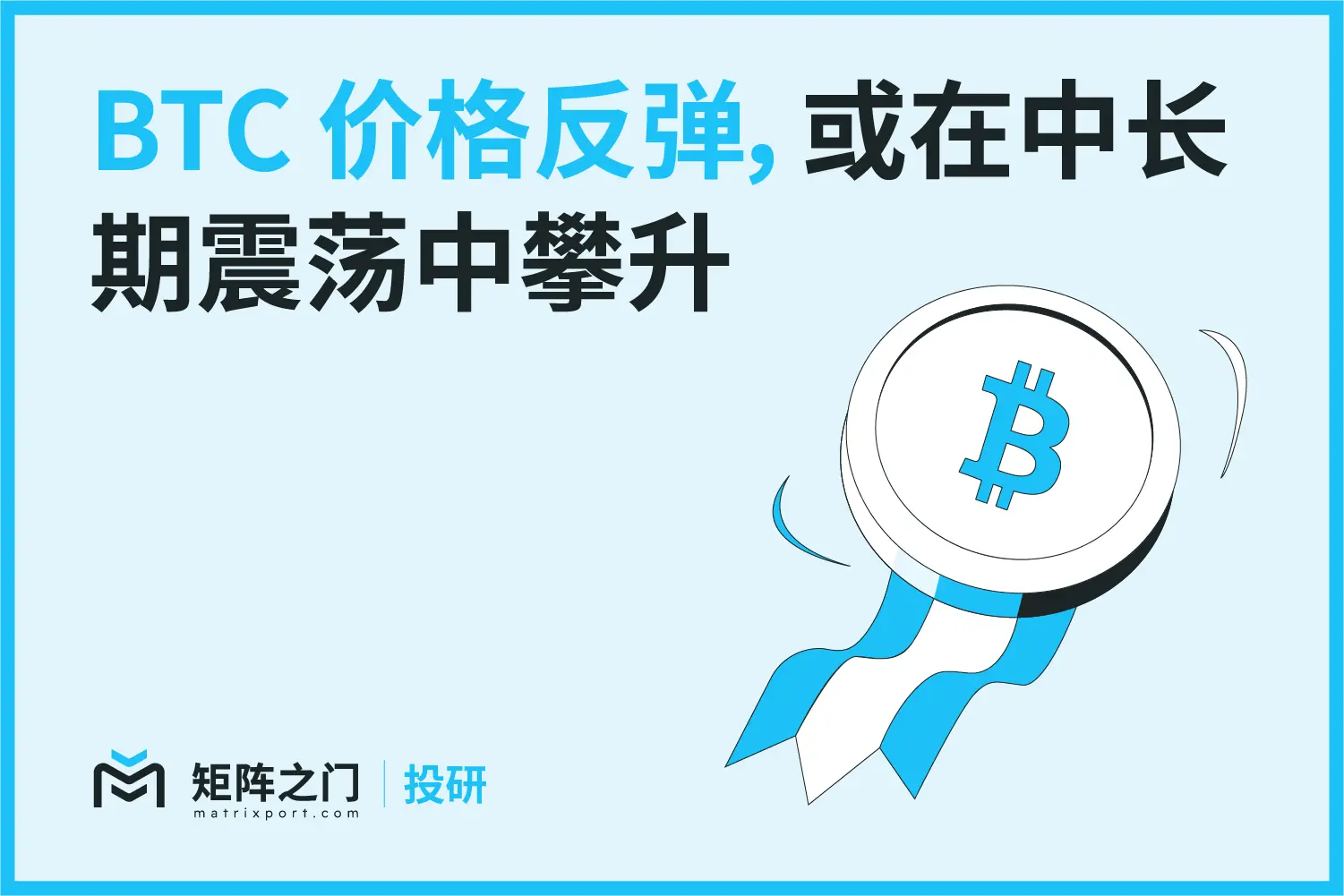2030 Looking back at 2025: That year, Wall Street officially took over Bitcoin
Author: Daii

One day in 2030, when BlackRock's Bitcoin ETF surpasses the scale of the S&P 500 index fund, Wall Street traders suddenly realize: that thing they once mocked as a "dark web toy" is now controlling the throat of global capital.
But the turning point began in 2025— that year, the price of Bitcoin broke through $250,000 amid the hunting of institutional whales, yet no one could clearly say who it belonged to. On-chain data shows that over 63% of the circulating supply was locked in institutional custody addresses, and the liquidity of Bitcoin on exchanges dwindled to just enough to support three days of trading volume.
The above is a fantasy; let's return to the present.
A large amount of capital is continuously flowing out of Bitcoin ETFs, and Bitcoin once fell below $80,000. This phenomenon can be explained mainly by two aspects: first, the policy front, where the U.S. under Trump launched a tariff war; second, the capital front, where 56% of short-term holders—hedge funds—closed their arbitrage strategies.
However, analysts believe that the current situation is in the "distribution phase" of the Bitcoin bull market.
The "distribution phase" of a Bitcoin bull market typically refers to the period around the peak price at the end of a bull market, where large holders ("whales") gradually sell off their chips, transferring Bitcoin from early holders to new investors entering the market. This phase signifies a transition from a frenzied rise to the top area and is a key moment for the bull-bear conversion.
Without further ado, let's give the answer: the current market liquidity structure has changed.
OG retail investors and OG whales are acting as sellers;
Institutional whales and new retail investors entering through ETFs have become the main buyers.
In the cryptocurrency space, "OG" stands for "Original Gangster" (often interpreted as "Old Guard"), specifically referring to the earliest participants, pioneers, or the core group of long-term holders in the Bitcoin field.
In short, old money is exiting, and new money is entering. Among the new money, institutions are dominant.
Next, we will provide a detailed analysis from the perspectives of market structure, current cycle characteristics, roles of institutions and retail investors, and the cycle timeline.
1. Typical Market Structure: Whales Distributing to Retail Investors at the End of a Bull Market
A typical Bitcoin bull market at its end shows a pattern where whales distribute chips to retail investors, meaning early large holders sell their coins at high prices to latecomer retail investors.
In other words, retail investors often buy at high prices in a frenzied atmosphere, while "smart money" whales take the opportunity to sell in batches at high prices to realize profits. This process has played out multiple times in historical cycles:
For example, near the peak of the 2017 bull market, the net balance of Bitcoin held by whales decreased, indicating that a large amount of chips was transferred out of whale hands. The reason was that a massive influx of new demand entered the market, providing enough liquidity for whales to distribute their holdings, as detailed in: The Shrimp Supply Sink: Revisiting the Distribution of Bitcoin Supply.

Overall, the market structure at the end of a traditional bull market can be summarized as follows: early holders gradually sell off, increasing market supply, while retail investors, driven by FOMO (fear of missing out), buy in large quantities. This distribution behavior is often accompanied by increased Bitcoin inflows to exchanges and movements of old coins on-chain, signaling that the market is about to peak and reverse.
2. Characteristics of the Current Bull Market: Structural New Changes
The current bull market (2023-2025 cycle) is different from past ones, especially in the behavior of retail and institutional investors.
2.1 Unprecedented Institutional Participation in This Cycle
The launch of spot Bitcoin ETFs and large-scale purchases by publicly traded companies have diversified the market participant structure, no longer driven solely by retail investors. The entry of institutional funds has brought deeper liquidity and more stable demand, directly reflected in the reduced market volatility compared to the past—analysis shows that the maximum drawdown in the current bull market is significantly smaller than in previous cycles, with peak corrections typically not exceeding 25%-30%, attributed to the stabilizing effect of institutional funds.
At the same time, market maturity has increased, with price increases becoming progressively smaller in each cycle, leading to a more stable trend. This can also be seen from indicators such as the growth rate of realized market cap: the current realized market cap has only expanded a small portion of the previous peak, indicating that the frenzy has not yet fully released (see: Thinking Ahead).
Realized market cap is an important indicator for measuring the inflow of market funds. Unlike traditional market cap, realized market cap is not simply calculated by multiplying the current price by the circulating supply but considers the price at which each Bitcoin was last traded on-chain. Therefore, it better reflects the actual scale of funds invested in the market.

Of course, the above indicators may also suggest that the market is entering a more mature and robust development phase.
2.2 Retail Investor Behavior in This Cycle is More Rational and Diverse
On one hand, seasoned retail investors (individual investors who have experienced multiple cycles) are relatively cautious, locking in profits earlier after a certain price increase, which differs from the past when retail investors would chase prices to the peak.
For example, data from early 2025 showed that small holders (retail investors) net transferred about 6,000 BTC (approximately $625 million) to exchanges in January, beginning to cash out early, while during the same period, whales only saw a slight net inflow of about 1,000 BTC, remaining largely inactive. This divergence indicates that many retail investors believe a temporary peak has been reached and choose to take profits, while whales (seen as "smart money") remain inactive, clearly expecting higher profit margins.
On the other hand, the enthusiasm of new retail investors continues to accumulate. Indicators such as Google Trends show that public interest temporarily declined and "reset" after prices reached new highs, without the previous cycle's peak of widespread frenzy. This suggests that the current bull market may not have entered the final euphoric stage, and there is still potential for market growth.
2.3 Institutional Investor Behavior is a Key Feature of This Bull Market
The previous bull market from 2020-2021 was the first cycle to see a large influx of institutions and publicly traded companies, during which the amount of Bitcoin held by whales actually increased—new "large holders" such as institutions bought heavily, transferring Bitcoin from retail investors to these whale accounts.
This trend continues in the current cycle: large institutions are buying Bitcoin through OTC markets, trust funds, or ETFs, making traditional whales no longer net sellers, which has somewhat delayed the arrival of the distribution phase. This has made the distribution in this bull market more gradual and dispersed, rather than the past model where retail investors solely absorbed the supply: the market's depth and breadth have increased, and new funds are sufficient to absorb the chips thrown by long-term holders.

Glassnode reports indicate that a significant amount of wealth has already shifted or is shifting from long-term holders to new investors, marking a sign of maturity in the Bitcoin market—long-term holders have realized record profits (up to $2.1 billion in a single day), while new investors have sufficient demand to absorb these sell-offs, see Bitcoin sees wealth shift from long-term holders to new investors -- Glassnode.
It is evident that the interaction between retail and institutional investors in this bull market has created a more resilient market environment.
3. Changes in the Roles of Institutions and Retail Investors: The Impact of OG Retail and Institutions on Liquidity
As the structure of market participants evolves, the roles of institutions and retail investors in the distribution phase have also changed significantly.
CryptoQuant CEO Ki Young Ju summarizes the current distribution model as: "OG retail investors + existing whales → new retail investors (through ETFs, MSTR, etc.) + new whales (institutions)."

In other words, retail investors and whales who have experienced the early cycle are gradually selling, while the buyers include not only traditional retail investors but also ordinary investors entering through investment tools like ETFs, as well as new institutional funds acting as whales.
This diversified participation pattern is starkly different from the traditional "whales → retail" single-line distribution model.
In this cycle, OG retail investors (early individual holders) may hold a significant amount of Bitcoin, and they choose to cash out at high levels during the bull market, providing some selling pressure and liquidity to the market.
Similarly, OG whales (early large holders) will also sell in batches to realize profits that are several times or even tens of times their initial investment. Correspondingly, institutional whales, as new buying forces, absorb this selling pressure by purchasing through custody accounts and ETFs, transferring Bitcoin from old wallets to these institutions' custody wallets.
Additionally, some traditional retail investors now also hold Bitcoin indirectly through ETFs and stocks of publicly traded companies (like MicroStrategy), which can be seen as a new form of "retail absorption."
This role shift has profound implications for market liquidity and price trends.
3.1 More Bitcoin is Leaving Exchanges
On one hand, the selling behavior of OG holders typically leaves obvious on-chain traces: increased movements of old wallets and large transfers flowing into exchanges.
For example, in this bull market, some long-dormant wallets have begun to activate, transferring coins to exchanges in preparation for sale, indicating that old holders are starting to distribute their chips. Ki Young Ju points out that the activities of OG players will be reflected through on-chain and exchange data, while the liquidity of "paper Bitcoin" (such as ETF shares and Bitcoin-related stocks) will only be reflected in the on-chain records of custody wallets at the time of settlement. In other words, institutional buying often occurs over-the-counter or through custody, with the direct on-chain reflection being an increase in the balance of custody addresses, rather than direct flows from traditional exchanges.
The current Bitcoin balance on exchanges is 2.22 million BTC, which reflects this characteristic.

3.2 New Whales and New Retail Investors are More Resilient
On the other hand, institutional investors, as new whales, not only provide substantial buying support but also enhance the market's ability to absorb selling pressure and liquidity depth.
Unlike the past when retail-led markets were prone to panic selling, institutional funds are more inclined to buy on dips and allocate long-term. When the market experiences a pullback, the involvement of these professional funds often stabilizes prices. For example, some analyses suggest that the reduced volatility in this bull market is attributed to institutional participation: when retail investors sell, institutions are willing to absorb the supply to ensure market liquidity, resulting in price pullbacks being much smaller than in the past.
Although the launch of Bitcoin ETFs has brought a significant amount of incremental funds to the market, some ETF holders (such as hedge funds) may primarily engage in arbitrage trading, leading to higher liquidity of their funds. The recent large outflows from ETFs indicate that some institutional funds are merely engaging in short-term arbitrage rather than holding long-term. The pressure on Bitcoin recently falling below $80,000 comes from hedge funds closing their arbitrage strategies.
However, new retail investors have shown strong resilience; they have not panicked and sold during each adjustment but are willing to continue holding, with indicators for short-term holders of Bitcoin showing stronger resistance to declines.
Overall, the interaction between OG retail + OG whales and new institutional whales + new retail investors has created a unique supply-demand structure in the current market: early holders provide liquidity, while institutions and new buyers absorb the chips, making the distribution process in the later stages of the bull market smoother and more traceable.
4. Market Cycle Timeline: Historical Trends and Outlook for This Bull Market
Historical data shows that the Bitcoin market exhibits a cycle of about four years, encompassing a complete cycle of bear market - bull market - transition. This is highly correlated with Bitcoin's halving events: after a halving, the new coin output sharply decreases, and a significant price increase (bull market) often occurs about 12-18 months later, followed by a bear market adjustment near the peak.
4.1 History
Looking back at the timelines of several major bull markets:
The first halving occurred at the end of 2012, after which Bitcoin's price peaked about 13 months later in December 2013;
The second halving in 2016, about 18 months later, saw the bull market peak near $20,000 in December 2017;
The third halving in May 2020, about 17-18 months later, Bitcoin experienced two peaks (in April and November) close to $70,000.
Thus, it is speculated that the fourth halving in April 2024 may trigger a new bull market, with its peak likely occurring within one to one and a half years after the halving, around the second half of 2025, when the final distribution phase (the end of the bull market) will arrive.
Of course, cycles do not repeat mechanically; changes in market environment and participant structure may affect the duration and peak of this bull market.
4.2 Optimistic
Some analyses suggest that the macro environment, regulatory policies, and market maturity will significantly impact this cycle.
For example, Grayscale's research team noted in a report at the end of 2024 that the current market is only in the mid-stage of a new cycle. If the fundamentals (user adoption, macro environment, etc.) remain strong, the bull market could extend into 2025 or even longer. They emphasized that the newly launched spot Bitcoin ETF has broadened the channels for capital entry, and the potential clarity of the U.S. regulatory environment (such as the potential impact of a new Trump administration) may further boost crypto market valuations.
This means that this bull market is likely to be longer than previous cycles, with the upward trend potentially extending beyond traditional time windows.
On the other hand, there is also on-chain data supporting the view of a prolonged bull market; for instance, the realized capital inflow in this cycle has not yet reached half of the previous peak, indicating that market enthusiasm has not been fully released. Some analysts thus predict that the final peak of this bull market may far exceed the previous one, with peak expectations commonly raised to $150,000 or even higher.
4.3 Conservative
However, some viewpoints suggest that the peak will occur within 2025.
CryptoQuant's Ki Young Ju predicts that the final distribution phase of the Bitcoin bull market (where various OG holders and institutions concentrate their sell-offs to the final absorbing funds) will occur within 2025. His judgment is based on the early distribution phase already underway and the observed influx of new retail funds, believing that there is no need to prematurely turn bearish before the final sell-off is completed.
Combining historical patterns and current indicators, it can be inferred that this bull market is likely to enter its final stages in the second half of 2025, at which point, as prices reach a temporary peak, various holders will accelerate the distribution of chips, completing the final distribution process.
Of course, the precise timing and height are difficult to predict, but based on the cycle length (about 1.5 years post-halving) and market signs (the level of retail frenzy, movements of institutional funds, etc.), 2025 may become a key year.
Conclusion
As Bitcoin transforms from a geek toy into a trillion-dollar strategic asset, this bull market may reveal a harsh truth: the essence of financial revolution is not to eliminate old money but to reconstruct the genetic chain of global capital with new rules.
The current "distribution phase" is, in fact, the coronation of Wall Street's formal takeover of the crypto world. When OG whales hand over their chips to BlackRock, it is not the prelude to a crash but the march of global capital's restructuring—Bitcoin is evolving from the myth of retail wealth to a "digital strategic reserve" on institutional balance sheets.
The most ironic part is that while retail investors are still calculating the "escape peak password," BlackRock has already written Bitcoin into the 2030 balance sheet template.
The ultimate question for 2025: Is this the peak of the cyclical cycle, or the birth pangs of a new financial order? The answer lies in the cold, hard on-chain data—every record of OG wallets being transferred out is adding bricks to BlackRock's custody addresses; every net inflow of ETFs is rewriting the definition of "store of value."
A piece of advice for investors traversing the cycle: the biggest risk is not missing out but interpreting the rules of the game in 2025 with the mindset of 2017. When "holding addresses" turn into "institutional custody accounts," and when "halving narratives" become "derivatives of Federal Reserve interest rate decisions," this century's transition has long surpassed the realm of bull and bear—history always repeats itself, but this time, it is not the tears of retail investors that take the stage, but the unceasing sound of on-chain transfers from institutional vaults.
This trend towards institutionalization may be likened to the evolution of the Web 1.0 era—what initially belonged to geeks ultimately fell into the hands of the FAANG (Facebook, Apple, Amazon, Netflix, and Google) giants.
The cyclical nature of history is always filled with dark humor.










